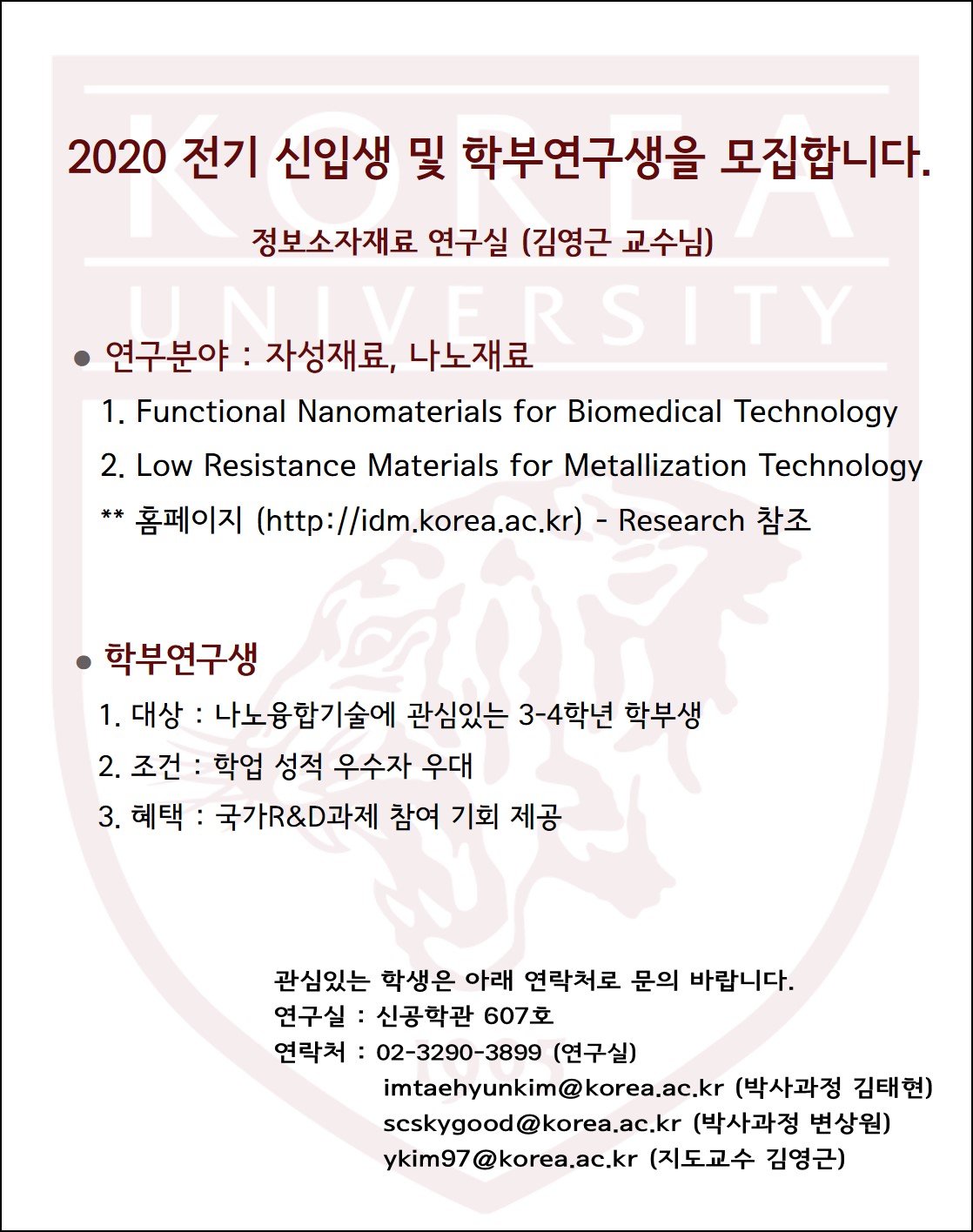고려대학교(총장 정진택) 신소재공학부 김영근 교수 연구팀은 100~200nm 크기의 나노 기공 내에 존재하는 금속 이온들이 외부 전기장 세기에 따라 다른 반응 경로 가지는 것을 세계 최초로 규명했다.
연구진은 산성 분위기에 있는 금속 이온들에게 환원극으로의 전기장이 인가(유도) 될지라도 전극 표면에서 바로 반응하는 것이 아니라, 부도체 표면을 따라 흐르는 전류 흐름에 맞춰서 환원이 될 수 있음을 발견했다. 이러한 환원 반응을 잘 제어할 수만 있다면, 가장 단순한 실린더형 나노와이어에서 가운데 부분이 뚫려있는 나노튜브형태, 심지어는 스프링과 같은 나노코일 형태 등 나노소재의 복잡성을 증가시키는 방향으로의 합성이 가능하다는 것을 이론, 실험적으로 확인하는데 성공했다. 이번 성과는 나노과학기술 분야에서의 세계적인 학술지인 ‘나노투데이’ (Nano Today, IF : 20.722)에 11월 26일 온라인 게재됐다.
출처: 에너지경제, 2021.11.29, 고려대 김영근 교수팀, 나노기공내 금속이온의 전기화학 반응 경로 규명 (ekn.kr)
Engineering the shape of one-dimensional metallic nanostructures via nanopore electrochemistry
Nano Today 42, 101348 (2022) [doi:10.1016/j.nantod.2021.101348]
The architecture of nanostructures is pivotal to determine material properties at the nanoscale, indicating the importance of harnessing sophisticated nanochemistry to elicit desirable material morphology with uniformity. The simplicity of template-assisted electrodeposition makes it a promising strategy for the fabrication of anisotropic nanomaterials. However, a challenge it faces is the complexity of the materials. This study presents a facile strategy and fabrication mechanism to synthesize nanotubes or nanocoils by selecting additives such as vanadyl ions and L-ascorbic acid. Vanadyl ions stick to the protonated anodized aluminum oxide surface, paving the way for electronic conduction. When a higher electrical field is applied, linear sweep voltammetry implies surface conduction mode is dominant in the spatially confined template. As L-ascorbic acid is included in the electrolyte, the nanostructure can be regulated from nanotubes to nanocoils. The nanocoils consist of numerous nanocrystalline primary particle considered as building blocks, and their relationship affects the final structures. The reaction product, vanadyl ascorbate, acts as a hurdle by partially hindering surface conduction and a helical modifier, inducing the formation of primary particle and their nanocoil assembly. Finally, a state diagram is provided to illustrate the diverse nanostructures at optimized applied current and additive ratio conditions.


